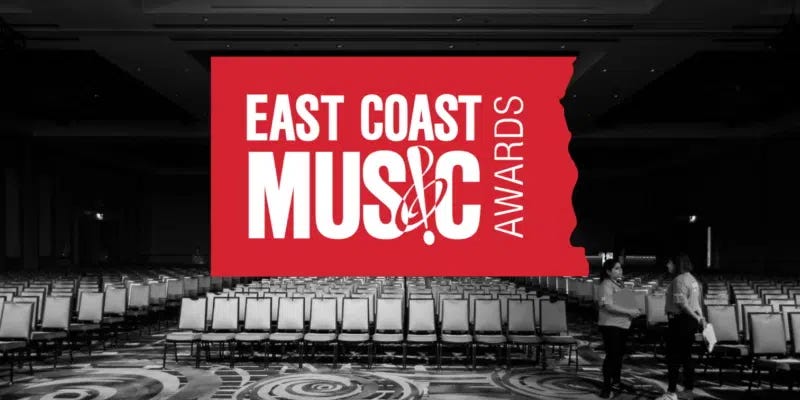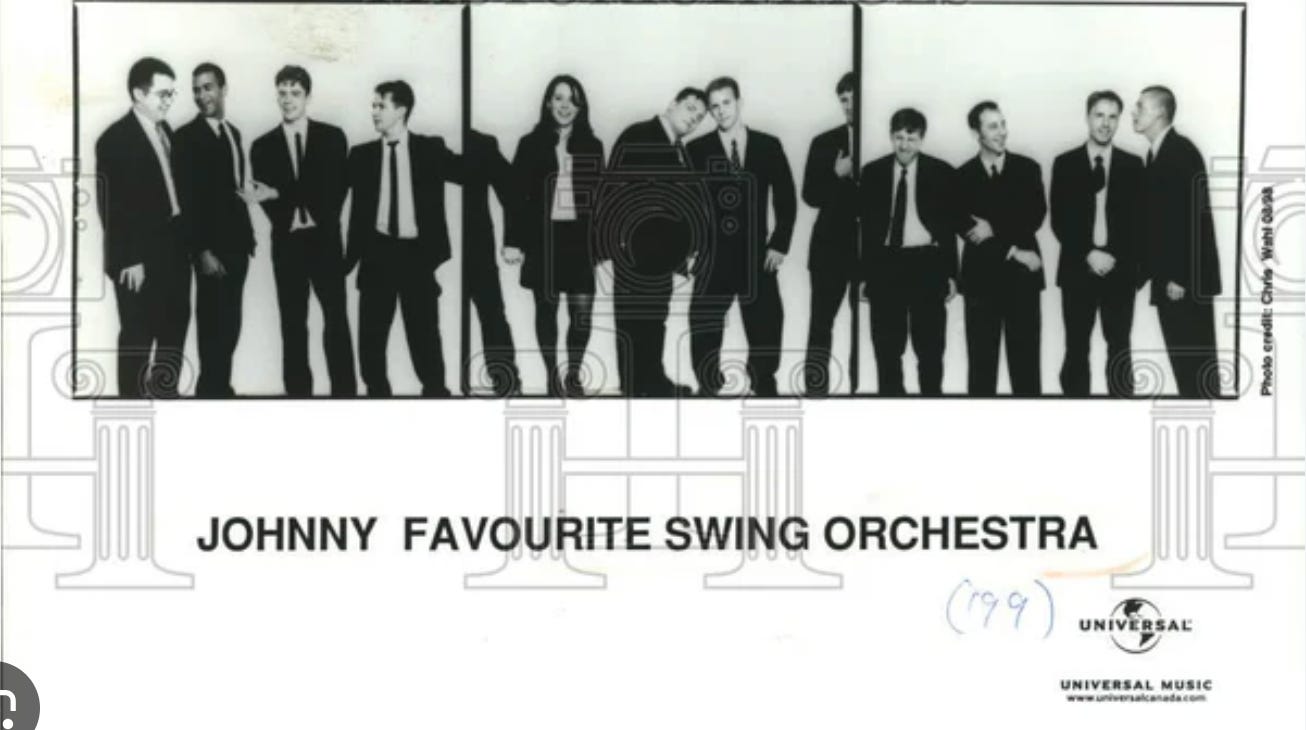Grants, Gatekeepers, and Games: How Industry Insiderism and Funding Rules Are Killing Music Scenes
"This Whole Scene Is Incestuous. But That's OK Too. You Support Us, We'll Support You." Chris Murphy - Painting A Room (Black Pool 1990)
A supportive scene is an organic community where musicians, fans, and venues fuel creativity through collaboration, shared spaces, and direct audience connection. Success comes from talent, hustle, and mutual support.
Music industry insiderism is a gatekept system where success depends on navigating bureaucracy, schmoozing the right people, and securing institutional validation through grants, showcases, and industry politics—often favoring connections over creativity.
In short: Scenes grow music from the ground up. Industry insiderism picks winners from the top down.
Halifax knows the difference. We've lived it. We feel it. In a city where music has built its own legends, we've seen how a supportive scene can overcome the odds, shatter barriers, and create magic. And we have seen how industry insiderism is a sour and bitter hill from which we’re looked down on from above.
Every great moment in music history has been born from the fertile ground of a vibrant local scene. From the blues clubs of Chicago to the punk explosion in London, and from the grunge movement in Seattle to the Celtic revival in Halifax, local scenes have always been the crucible where innovation, collaboration, and authenticity thrive.
Scenes provide more than just stages—they offer shared spaces where ideas bounce, artists push each other, and a supportive community nurtures creative risk. Without these organic networks, music stagnates, and artists struggle to find their voice. It’s not the labels, governments, or distant institutions that ignite revolutions in music—it’s the people in the room, the culture of a place, and the shared vision of what could be.
Halifax should know this better than most. We’ve seen how a tight-knit community can overcome challenges to create something extraordinary, and how the power of a local scene can send ripples across the world. The real question isn’t whether scenes matter, but how we can foster and protect them in a system that too often works against their survival.

What is a Scene?
It can be shockingly small.
But a local scene is more than just a collection of a few artists performing in the same geographic area—it’s an ecosystem where creativity thrives and new ideas take root. It’s the dive bars and coffee shops where artists first test their work, the independent record stores, a skate shop, or barbershop that celebrate local talent and plays it loud, and the loyal fans - many also artists themselves - who form a community around shared experiences. Scenes are incubators of innovation, driven by collaboration and friendly competition, where musicians influence and inspire one another.
Every transformative moment in music history began in a scene. These are spaces where the line between audience and performer blurs, where risk is rewarded, and where the most unexpected voices can rise to the top. A scene isn’t just a backdrop—it’s the engine of change, fueled by the collective passion of those who believe in something bigger than themselves.
The Beach Goth Scene
Dana Point, California, Pop. 33,103, just off California Hwy 1, one of the few harbours along the Orange County coast has seen its scenes: Surf Guitar Rock, 1961, mixed surf culture with Lebanese and Mexican music along with the new technology of spring reverb tanks and electric guitars… for everyone in Orange County who was into that. And then 50 years later - Beach Goth. Yes, Dana Point Beach Goth is a real, niche subgenre that blends elements of surf rock with the dark, moody aesthetics of goth music. It's characterized by reverb-drenched guitar riffs typical of surf rock, combined with haunting, melancholic vocals and atmospheric, often eerie instrumentation. Bands like The Growlers and La Luz have been associated with this vibe.
The style captures a unique blend of California's sunny surf culture and the brooding introspection of goth, creating a sound that feels both nostalgic and hauntingly modern. It's a testament to how local scenes and subcultures can evolve, drawing on unexpected influences to create something new.
Meanwhile in Halifax
As usual. The answer is hidden in plain sight. Here’s my friend Jah’Mila and more good-hearted folks singing East Coast Family. The very things we're told unite us—grants, showcases, industry support—too often become weapons that divide us, turning collaboration into competition and community into a battlefield for scarce resources. Instead of strengthening the scene, they fracture it, pitting artists against each other for validation from bureaucrats and gatekeepers rather than audiences.
It seems weird looking back, that I’ve spent almost 40 years making music about making music in Halifax. But I think at some point - probably when I decided I would not leave to do music in 1989 - that it became a kind of performance art - something that created the fuel for its own fire.
Opening as a support act for Billy Bragg, I was standing side stage the first time I heard him sing, “If no one out there understands, start your own revolution and cut out the middle man” from his musical manifesto Waiting On The Great Leap Forward. It’s something I took to heart. Within a year I wrapped up my rock and roll career and went looking for some clear blue water uncluttered and uncontaminated by any other established inside track. I found it in a little walk-down club building a traditional 1940s-era big band from scratch and a scene along with it. What an experience. In music, I highly recommend starting from nothing with no support. It’s really the only way to go.
The Eternal Struggle: Musicians vs. the Machine
In the wake of the East Coast Music Association (ECMA) firing its newly minted CEO, the local music scene finds itself once again embroiled in a bitter public battle hitting all sour notes. The debacle has quickly turned into a firestorm on social media, with artists, administrators, and industry insiders taking sides. What should have been an opportunity to move the music community forward has devolved into a familiar and unhelpful mess—an unseemly blend of insiderism, generational divides, genre wars, and identity politics.
But this controversy, as loud as it is, only scratches the surface of the real problem. The real struggle isn’t between artists and administrators, nor between the old guard and the new, nor even among genres fighting for legitimacy. The real struggle is between musicians and the broken system that surrounds them. A system designed not to empower artists but to consume them.
This isn’t just a Nova Scotian issue. It’s endemic to the music industry everywhere. And if we don’t address the root causes, we’ll find ourselves stuck in this cycle of conflict and failure indefinitely.
Competition vs. Subsidy: Two Different Games
In a true free market, competition is the engine that drives innovation, quality, and consumer choice. But when it comes to government-funded music programs, the competition isn't about creating the best product for an audience—it's about navigating bureaucracy, fitting within predetermined funding priorities, and playing to gatekeepers' preferences. That’s not a free market; that’s a different game entirely.
Unlike an audience-driven marketplace, where music succeeds because people choose to listen and buy tickets, government-funded showcases create an artificial scarcity of opportunity. Instead of competing to win over fans, artists must compete for institutional validation, which can favor grant-writing skills, networking, or political alignment over raw artistic merit. This can feel discouraging—like a creative economy running in reverse, where success depends on access rather than audience appeal or valuable creative output.
Competing in the free market means winning or losing based on artistic and business acumen. Competing for government grants and showcases means jumping through hoops, conforming to program mandates, and often appealing to bureaucratic tastes rather than the public’s. This feels less like competition and more like petitioning—where artists must prove their worthiness to a committee rather than an audience. For the winners, it’s a pyrrhic victory, for the losers it’s worse.
If we are going to have public funding for music, let it fuel access, not systemic distraction. Shift from gatekeeper-driven grants, showcases, and awards to audience-driven support—tax incentives for direct patronage, fewer middlemen, and more platforms where artists compete for real audiences, not bureaucratic favor. Creativity thrives in markets, not in mazes.
The Problem with Picking Winners
The ECMA’s recent turmoil reflects a deeper flaw in the way government and industry systems attempt to support music. These systems rely on a “pick-a-winner” model, where a small group of artists or projects are chosen for significant funding or promotion. On paper, this seems efficient: concentrate resources where they’ll have the most impact. In practice, it rarely works that way.
Instead, this model often:
Rewards conformity over creativity, as gatekeepers tend to fund safe, predictable projects.
Amplifies existing inequities and ideology by favoring those already connected to industry networks.
Creates a zero-sum environment where artists compete against each other for scraps, rather than collaborating to build something greater.
For every artist who “wins” under this system, countless others are left behind—not because they lack talent or drive, but because the system wasn’t designed to accommodate them. Worse, these “losers” often become disillusioned, and the broader community becomes fractured, bitter, and sour.
This flawed model doesn’t just fail artists; it fails audiences, who are left with a narrower, less diverse cultural landscape.
A Broken Model
The current controversy also highlights the music industry’s parasitic nature. Labels, managers, and industry bodies often benefit more from artists than the artists benefit from them. It’s a system built on what I call the “come along for the ride” phenomenon: industry insiders attach themselves to artists who are already succeeding and extract value without offering much in return.
Meanwhile, government funding programs—meant to level the playing field—often do the opposite. Bureaucratic inefficiencies, often farmed out to arms-length groups with their own faults and foibles, outdated criteria, and political considerations skew the process, making it difficult for genuinely innovative or grassroots projects to gain traction. These programs don’t just fail to support artists; they actively harm the community by fostering resentment and division.
The ECMA’s leadership crisis is a case study in these dynamics. Instead of addressing systemic issues, the debate has devolved into a proxy war over identity politics, generational divides, and genre hierarchies. None of this helps musicians. It only reinforces the barriers that prevent them from thriving.
TWRP - A Halifax Band That Succeeded In Spite of the System - No grants, no ECMA’s, No Music Nova Scotia, just an old-fashioned audience
Success in Spite of the System
The truth is that most musicians who achieve success do so in spite of the systems meant to support them. From Sloan and Sarah Mclaughlin to the latest, the best path to real success is by going around the system. They succeed because of their talent, determination, and ability to adapt—not because of grants, industry connections, or institutional backing.
Consider the countless artists who have bypassed traditional structures entirely, building careers through direct-to-fan platforms, social media, and independent touring. These artists thrive because they’ve found ways to connect with audiences without relying on gatekeepers. Their success is a testament to the resilience and ingenuity of musicians—and a damning indictment of the industry.
But this shouldn’t have to be the norm. Musicians shouldn’t have to succeed despite the system. The system should be working for them, not against them.
The Real Struggle
At its core, the current firestorm isn’t about one CEO, one organization, or one set of policies. It’s about the survival of artists in a system that’s rigged against them. And it’s about the broader community’s failure to address the real issues.
The endless debates over identity politics and generational divides are distractions. They obscure the fact that musicians face enormous structural challenges: financial instability, lack of infrastructure, exploitation by industry players, and relentless pressure to compete rather than collaborate. These are the issues that matter. These are the battles worth fighting.
Lessons Beyond Nova Scotia
This struggle isn’t unique to Nova Scotia. Artists everywhere face similar challenges. From Nashville to New York, from London to Lagos, the music industry operates on the same flawed principles. But that also means the solutions can be universal.
Regions like Austin, Texas, and Melbourne, Australia, have shown how grassroots, artist-driven approaches can create thriving music scenes. These communities prioritize collaboration over competition, invest in infrastructure rather than bureaucracy, and empower artists to take control of their careers.
Nova Scotia—and other regions—can learn from these examples. But it requires a shift in mindset. It requires us to stop fighting over the crumbs and start building a bigger table.
A Call for Radical Reform
If we want to fix the music industry, we need to start with radical reform:
End the Pick-a-Winner Model: Shift funding from individual grants to community-focused programs that benefit all artists.
Cut Bureaucracy: Streamline funding processes to make them more accessible and transparent.
Invest in Infrastructure: Create more venues, rehearsal spaces, and recording facilities.
Support Collaboration: Fund projects that bring artists together rather than pitting them against each other.
Empower Artists: Provide resources and training to help musicians take control of their careers.
Build Community, Not Systemic Competition
The music community doesn’t need more infighting. It needs unity. It needs a shared vision for what a truly artist-centric industry could look like. And it needs leaders who are willing to fight for that vision, even when it’s uncomfortable or unpopular.
This week’s social media storm will pass, as they always do. But the underlying issues will remain. It’s up to us—musicians, fans, and industry players alike—to address them. Because the real struggle isn’t between artists and administrators, or between genres and generations. The real struggle is between musicians and the machine. And it’s a fight we can’t afford to lose.
https://www.reverbnation.com/swampspruceboys/song/12582904-painting-a-room









Tremendously on point!
Thank you.
The creators should be the dog wagging the tail that is/are “the rest”…
Long gone are the years when an organization like ECMA served a relevant useful purpose for its membership…especially those starting their journey.
Collaboration in place of competition for pointless awards.
Hi JWC! Well written post, some of which I agree with - totally agree re the scene is the thing, and for sure the funding & governance systems are hot insider garbage. But I disagree entirely about the free market being any good for music. In fact the commodification of music is the biggest enemy of music and the people who love it. Nowadays the free market is... Spotify? Wherein the penniless cannot compete against giant megacorps. Hard nope here. And, what do you mean by "identity politics"? Please say more about that.